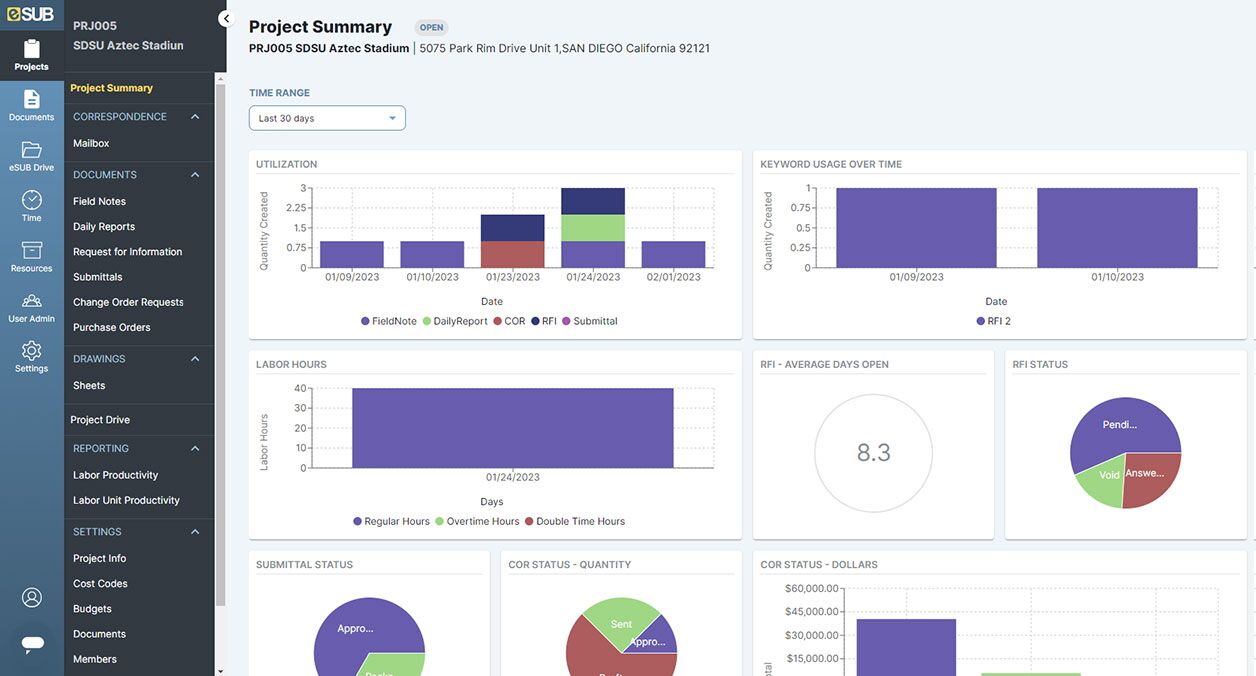Construction Project Management Software: Optimizing Process and Productivity
Construction Project Management Software: Optimizing Process and Productivity
Blog Article
Tailored Building And Construction Management Software: Optimizing Resource Allotment and Budgeting Techniques
In the realm of contemporary building monitoring, the value of tailored software services can not be overstated. These sophisticated devices provide a nuanced approach to maximizing source appropriation and budgeting methods, necessary elements for successful project implementation. By diving into the details of how such software can improve resource allotment methods and refine budget optimization strategies, a clear pathway towards heightened task efficiency emerges. In this digital age where precision and performance preponderate, exploring the influence of tailored building administration software on these important facets uncovers a world of opportunities that might shape the future of the sector.
Advantages of Tailored Software Solutions
Customized software program services supply a myriad of advantages to construction monitoring firms seeking to enhance effectiveness and enhance procedures. One essential benefit is the modification of functions to align with the certain needs of the building sector (evolve construction). By customizing software application solutions to attend to job administration, scheduling, budgeting, and resource allotment, companies can maximize their process and accomplish higher efficiency. Furthermore, tailored software application permits seamless combination with existing systems, decreasing the requirement for hands-on data entry and minimizing mistakes.
Another advantage of tailored software program remedies is the ability to provide real-time insights and analytics. Building and construction management firms can take advantage of data-driven decision-making to monitor project development, recognize bottlenecks, and make adjustments quickly. This proactive method boosts project end results and aids firms stay on track with timelines and budget plans.
Improved Source Allowance Approaches
Executing reliable resource allowance techniques is vital for construction monitoring firms to maximize job outcomes and make best use of productivity. By leveraging building and construction management software that supplies real-time monitoring and reporting functions, firms can dynamically readjust allotments as job requires evolve, leading to enhanced performance and cost-effectiveness. construction software.
Additionally, boosted resource allotment approaches make it possible for building and construction firms to recognize and resolve possible bottlenecks or resource constraints proactively. By conducting normal analyses of source use and performance metrics, supervisors can make data-driven decisions to rearrange resources properly and stop delays. This proactive method not just boosts task timelines yet additionally minimizes the threat of spending plan overruns due to inefficient resource allocation.
Spending Plan Optimization Techniques
To achieve optimal economic efficiency in building projects, efficient spending plan optimization techniques play a crucial role in making sure price control internet and task success. One key method is the establishment of a detailed task budget plan that allots resources based upon priority and crucial requirements. By clearly defining the scope of job, setting reasonable price estimates, and continuously tracking expenditures, building managers can recognize potential price overruns beforehand and take rehabilitative actions. Furthermore, carrying out worth design practices can assist improve project prices without endangering high quality. This includes assessing each job element to determine possibilities for price savings while maintaining performance standards. Additionally, leveraging historical information and industry benchmarks enables building and construction supervisors to make enlightened choices about budget plan allocations and determine areas where spending can be enhanced. By incorporating these budget optimization strategies into building and construction monitoring software application, task stakeholders can enhance monetary preparation, resource allocation, and total budget management to drive project success and success.

Impact on Job Performance
Maximizing building and construction management software can considerably improve job performance by simplifying interaction, boosting collaboration, and facilitating why not try these out data-driven decision-making. In addition, building and construction monitoring software application can offer beneficial insights via data analytics, enabling task supervisors to make educated choices rapidly and precisely.
Furthermore, the automation of routine tasks such as organizing, budget plan tracking, and resource allocation can liberate useful time for task groups to concentrate on crucial activities, ultimately speeding up job distribution. The ability to monitor job development in real-time and recognize possible bottlenecks allows aggressive analytic, avoiding issues from rising and creating hold-ups. Overall, the impact of tailored building administration software application on project efficiency is indisputable, supplying a competitive advantage by maximizing process and taking full advantage of productivity.
Future Trends in Building And Construction Software Application
As the construction sector remains to progress, innovations in modern technology are shaping the future landscape of building software application solutions. One substantial trend on the perspective is the boosting integration of synthetic intelligence (AI) and maker learning capabilities in building and construction software. These technologies have the prospective to reinvent just how construction jobs are taken care of by enabling predictive analytics, automated decision-making processes, and boosted task insights.
Another future trend in building and construction software application is the growing focus on cloud-based options. Cloud modern technology provides boosted flexibility, scalability, and ease of access for building and construction groups, allowing for real-time collaboration and data sharing across task stakeholders. This shift in the direction of cloud-based software program is anticipated to improve job efficiency, simplify interaction, and improve overall job results.
In addition, the rise of Structure Details Modeling (BIM) is anticipated to continue forming the building software application landscape. BIM software program assists in 3D modeling, visualization, and data administration, leading to enhanced advice job control, lowered errors, and improved project end results. Welcoming these future fads in construction software application will be vital for business wanting to stay competitive and drive innovation in the industry.
Verdict
In verdict, customized building management software program uses various benefits such as improved source appropriation methods and spending plan optimization methods. This software has a significant influence on job effectiveness by improving procedures and enhancing total performance (construction software). As technology remains to advance, future trends in building software program are expected to more enhance resource allowance and budgeting strategies for building projects
Report this page